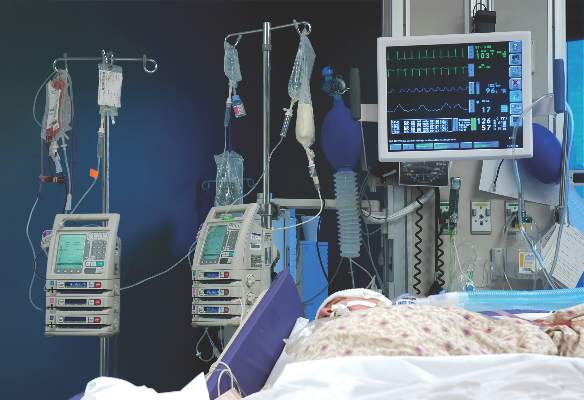AT THE CRITICAL CARE CONGRESS
ORLANDO (FRONTLINE MEDICAL NEWS) – Most of the ICU directors responding to a survey had delirium screening protocols in place, but said their current practices don’t conform to best practice guidelines.
“While most ICUs have protocols that incorporate delirium screening with a validated tool, most perceived current delirium prevention and treatment strategies do not reflect best evidence or current pain, agitation, and delirium practice guidelines,” senior author Amy Dzierba, Pharm.D., said in an interview. Practice guidelines for pain, agitation, and delirium in the ICU, promulgated jointly by the American College of Critical Care Medicine (ACCM) and the Society of Critical Care Medicine (SCCM) in 2013, call for ICU patients to be screened regularly for delirium, and recommend non-pharmacologic and pharmacologic interventions to prevent, or reduce the duration of, delirium in critically ill adults.
The Critical Care Pharmacy Trials Network (CCPTN) initiated the survey. Responses came from 19 hospitals with 42 ICUs, with 74% of them being academic medical centers and the remainder teaching community hospitals. Joshua Swan, Pharm.D. of Texas Southern University, Houston, presented the study findings at the Society for Critical Care Medicine’s annual Critical Care Congress.
The multicenter, observational, cross-sectional study used a validated, web-based survey that included questions about demographic characteristics of the ICUs, as well as a series of 36 questions about perceptions of delirium screening, prevention, and treatment practices.
Most ICUs (26/42, 62%) used the Confusion Assessment Method for the ICU (CAM-ICU), while another 10 hospitals (24%) used the Intensive Care Delirium Screening Checklist Worksheet (ICDSC). The other hospitals used physician or nurse opinion, or another method.
Twenty-two of 42 respondents (58%) judged that they screened for delirium twice daily; 10 ICUs thought they screened three times daily, three screened once daily, and the rest thought they screened more frequently than twice daily.
A non-pharmacologic delirium prevention and reduction protocol was in place for 33 (80%) of the ICUs. Specific interventions that respondents judged they used, regardless of delirium presence, included reorientation in more than 80% of ICUs, catheter and restraint removal in more than 70% of ICUs responding, and ensuring eyeglasses were donned for about 70% of ICUs.
Less frequently-used interventions were provision of hearing aids, early mobilization, reduction of unnecessary noise and stimulation, music therapy, provision of earplugs, and cognitive exercises.
About half of survey respondents said that their ICUs used early mobilization as a delirium prevention strategy.
“We thought that early mobilization would be used more frequently,” said Dr. Dzierba , clinical pharmacy manager for adult critical care at Columbia University Medical Center’s New York-Presbyterian Hospital. She noted, however, that respondents may be utilizing this strategy and others some of the time, without having formalized policies. Also, administrative and logistical challenges, such as ICU staffing models, may create barriers to implementing early mobilization and other non-pharmacologic approached to preventing and managing delirium.
Perceived pharmacologic strategies that were used in about half of the ICUs for patients without delirium included avoidance of benzodiazepines for sedation, minimization of anticholinergic medication, and minimization of caffeine.
About half of survey respondents reported that they scheduled atypical antipsychotic medication for their patients with delirium, while about 40% reported they used as needed atypical antipsychotic medication. About 30% of ICUs said they were substituting propofol for benzodiazepines in continuous infusion; about 30% of ICUs thought they used PRN haloperidol for delirium. Fewer than 20% of responding ICUs said they substituted PRN for continuously infused benzodiazepines, used scheduled haloperidol, or used other pharmacologic regimes.
“Future studies should compare actual practices to those that are perceived, which we plan to accomplish using data from the second part of our study,” Dr. Dzierba said.
Dr. Dzierba reported no external source of funding for the study, and the authors had no relevant conflicts of interest to disclose.
On Twitter @karioakes






